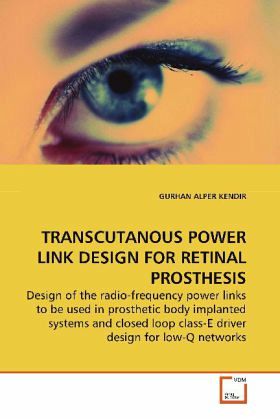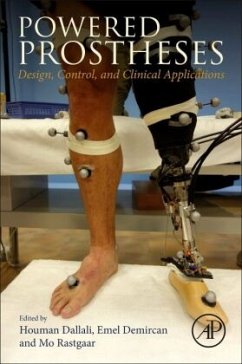
TRANSCUTANOUS POWER LINK DESIGN FOR RETINAL PROSTHESIS
Design of the radio-frequency power links to be used in prosthetic body implanted systems and closed loop class-E driver design for low-Q networks
Versandkostenfrei!
Versandfertig in 6-10 Tagen
32,99 €
inkl. MwSt.

PAYBACK Punkte
16 °P sammeln!
Design of the radio-frequency power links to be usedin prosthetic body implanted systems is important. Anovel design procedure for the coil design consideringboth the efficiency of the system and the radiatedmagnetic field is presented in this book. Closed loopclass-E driver design for low-Q networks is alsopresented along with the coil design. Mainspecifications used in the design procedure aredimensions of the coils, distance between them,frequency of operation, load power, load voltage andthe maximum available input DC voltage. Experimentalresults showed an overall power link efficiency of6...
Design of the radio-frequency power links to be used
in prosthetic body implanted systems is important. A
novel design procedure for the coil design
considering
both the efficiency of the system and the radiated
magnetic field is presented in this book. Closed loop
class-E driver design for low-Q networks is also
presented along with the coil design. Main
specifications used in the design procedure are
dimensions of the coils, distance between them,
frequency of operation, load power, load voltage and
the maximum available input DC voltage. Experimental
results showed an overall power link efficiency of
65% delivering 250mW power to a 16V DC load from an
optimal distance of 7mm.
in prosthetic body implanted systems is important. A
novel design procedure for the coil design
considering
both the efficiency of the system and the radiated
magnetic field is presented in this book. Closed loop
class-E driver design for low-Q networks is also
presented along with the coil design. Main
specifications used in the design procedure are
dimensions of the coils, distance between them,
frequency of operation, load power, load voltage and
the maximum available input DC voltage. Experimental
results showed an overall power link efficiency of
65% delivering 250mW power to a 16V DC load from an
optimal distance of 7mm.












